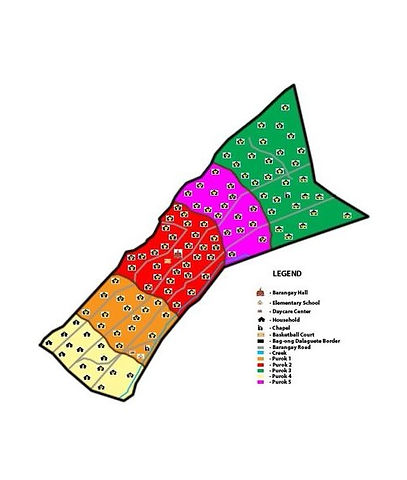
This blog contains the expedition of eight medical students in the assigned area of Barangay Bag-ong Dalaguete of Mahayag Municipality in Zamboanga Del Sur, Philippines. Together with the residents, we hope to improve their living conditions and health status for a healthier community. Be a witness of our journey as we share with you our stories and experiences during our community immersion.




About the Community
Barangay Bag-ong Dalaguete is a hilly rolling area with a total land area of 369.48 hectares and is classified as an upland area. It is located in the north eastern part of Barangay Poblacion, Mahayag, Zamboanga del Sur. It is bounded on the east by Barangay Balanan, on the west by Barangay Panagaan, on the north by Sitio Compound and on the south by Barangay Tuboran.
Bag-ong Dalaguete enjoys distinct dry and wet seasons. It has a fairly warm temperature throughout the year. The winds in this area are generally light blowing from north to southward during rainy season and east to westward during dry season. The dry season usually starts on the month of October to the month of May. While the succeeding months mark the start of the rainy season.
Barangay Officials

Local Services
The barangay has no access to safe water since its location is not accessible for the municipal water system (DCWD). The people living in Bag-ong Dalaguete are using water from shallow open spring. 69 households out of the total have no access to sanitary toilet. Most of the barangay residents use composting and burning as a methods of disposing their waste materials. The barangay also does not have a scheduled garbage truck for collection of their load wastes. Out of 97 households, there are 34 that have electricity which is 36% of the total population. Commonly used mode of transportation is a motorcycle or more locally known as a “habal-habal”. In every purok there are available mini variety stores or also known as “sari-sari” store not only as a means of additional income but as a place to buy ingredients and other house materials as well.
Population
Barangay Bag-ong Dalaguete has a total population of 417 with 5 puroks. Purok 1 has 94 individuals. Purok 2 is centrally located and has 105 individuals. Purok 3 is the northern most part of the barangay having 96 individuals. Purok 4 is situated west of Purok 1 having 60 individuals while Purok 5 which is located north of Purok 1 and 2 has 64 individuals. There are 219 males and 200 females. There are a total of 97 households in Barangay Dalaguete. Purok 1 has 23 households, Purok 2 has 25 households, Purok 3 has 20 households, Purok 4 has 15 households, and Purok 5 has 14 households. Out of 97 households, the average household size is 4.3.
Medical Health Facility ; Personnel and Services
Bag-ong Dalaguete has one (1) midwife who is a Local Government Unit employee and she is assigned to monitor the health and nutrition status of the residents particularly the children. The assigned midwife caters four other barangays and is scheduled to visit every second Tuesday of the month. Aside from the midwife, the barangay has also one (1) barangay health worker, who monitors and tracks pregnant women in the barangay. There is also one (1) barangay nutrition scholar who assists the midwife in health services. However, there is no existing barangay health station in the area.
Economy
Since the barangay is an agricultural area, most of the residents engage in farming as primary source of income and livelihood. Their economic resources revolve mostly around farming livestock taking up to 74 and 55 hectares of the land area respectively. They also take most of their staple food and viands from their harvests. Majority of the households raise chickens, carabaos, hogs, horses, and goats as a means to earn additional income. The average income of a family in Bag-ong Dalaguete ranges from 1500 php to 3000 php every month. Barangay Bag-ong Dalaguete has 37.3% unemployment rate, with 22% proportion of household with income below the poverty threshold. Despite that, there are no households that experienced food shortage. There are 235 populations of household members that are considered economically productive. Majority are in the farming industry, and the rest are engaged in service work, government and other organizations, and as laborers and unskilled workers.

Spot Map
The map of the barangay that shows the division of the area by purok. Showcasing the distribution of households per purok, and the location of the elementary school present in the barangay, and as well as the churches, creaks, and the barangay hall's location




